Study on Forest Extraction and Ecological Network Construction of Remote Sensing Images Combined with Dynamic Large Kernel Convolution
Abstract
1. Introduction
2. Study Area and Data
2.1. Overview of the Study Area
2.2. Research Data
2.3. Experimental Data
3. Research Methods
3.1. Dynamic Large Kernel Convolution
3.2. Dynamic Large Kernel Segformer Forest Extraction Modeling
3.3. Morphological Spatial Pattern Analysis (MSPA)
3.4. Ecological Network Theory
- (1)
- Circuit Theory
- (2)
- Minimum Cumulative Resistance
- (3)
- Linkage Mapper Analysis
3.5. Accuracy Evaluation Indicators
4. Experimental Studies and Analyses
4.1. Model Training
4.2. Experimental Findings
5. Discussion
5.1. Spatiotemporal Change in Forest Land in Liaoning Province
5.2. Forest Ecological Network Construction
- (1)
- Ecological sources: Ecological sources are the core carriers of ecosystems and play a decisive role in maintaining biodiversity and guaranteeing the habitat and reproduction of species. They usually need to have a certain scale to support stable ecological processes. In this study, ecological source areas were delineated according to the significance of regional ecological services and habitat quality and identified from the dimensions of connectivity and importance. By analyzing the data on vegetation cover, species distribution, ecological service function, and landscape patterns, we identified 15 ecological source sites in Liaoning Province, which are the Core areas of biological habitats with high ecological integrity and species richness. In total, 216 potential source sites were identified, which provide a direction of expansion for the subsequent ecological conservation and rehabilitation and help improve the stability of the regional ecosystem.
- (2)
- Ecological corridors: Ecological corridors are linear/belt-shaped ecological patches connecting ecological source areas. They are the core part of ecosystem connectivity, with the key functions of species migration, energy flow, and material circulation. In this study, we used circuit theory, the synthesized topography, land use, ecological resistance, and other factors to simulate the movement paths of ecological flow and identified a total of 23 ecological corridors. Among these, 12 important corridors are spatially distributed across the northeastern and central parts of Liaoning Province, connecting the core ecological sources, with a high density of ecological flows and dominating the regional ecological connectivity, while 11 general corridors assist in improving the ecological network. The centralized distribution of the corridors in the northeast and central part of the study area not only reflects the characteristics of the regional ecological source layout but also highlights the active nature of the ecological process in the region, which is of great significance in promoting biological migration and maintaining ecological balance.
- (3)
- Ecological nodes: The key ecological nodes in this study consisted of 65 ecological pinch points and 37 ecological barrier points. The ecological pinch points are located within the ecological corridors, which are key channels of ecological flow, but due to the high resistance value of the periphery, they are easily impacted by human activities and become a “bottleneck” for biological migration. The ecological obstacle points are mostly located in the central and western parts of the study area and affected by the factors of land use and transportation networks, forming a barrier to ecological flow and hindering the ecological balance. Together, the two types of nodes affect the connectivity and stability of the ecological network, and their precise identification provides important guidance to optimize the ecological network and enhance the ecosystem function, which is the core concern of ecological protection and restoration.
5.3. Study Limitations and Directions for Future Research
6. Conclusions
Author Contributions
Funding
Data Availability Statement
Acknowledgments
Conflicts of Interest
References
- Watson, J.E.M.; Evans, T.; Venter, O.; Williams, B.; Tulloch, A.; Stewart, C.; Thompson, I.; Ray, J.C.; Murray, K.; Salazar, A.; et al. The exceptional value of intact forest ecosystems. Nat. Ecol. Evol. 2018, 2, 599–610. [Google Scholar] [CrossRef]
- Díaz, S.; Pascual, U.; Stenseke, M.; Martín-López, B.; Watson, R.T.; Molnár, Z.; Hill, R.; Chan, K.M.A.; Baste, I.A.; Brauman, K.A.; et al. Assessing nature’s contributions to people. Science 2018, 359, 270–272. [Google Scholar] [CrossRef]
- Bryan, B.A.; Gao, L.; Ye, Y.; Sun, X.; Connor, J.D.; Crossman, N.D.; Stafford-Smith, M.; Wu, J.; He, C.; Yu, D.; et al. China’s response to a national land-system sustainability emergency. Nature 2018, 559, 193–204. [Google Scholar] [CrossRef]
- Zhu, Z.; Wulder, M.A.; Roy, D.P.; Woodcock, C.E.; Hansen, M.C.; Radeloff, V.C.; Healey, S.P.; Schaaf, C.; Hostert, P.; Strobl, P.; et al. Benefits of the free and open Landsat data policy. Remote Sens. Environ. 2019, 224, 382–385. [Google Scholar] [CrossRef]
- Gorelick, N.; Hancher, M.; Dixon, M.; Ilyushchenko, S.; Thau, D.; Moore, R. Google Earth Engine: Planetary-scale geospatial analysis for everyone. Remote Sens. Environ. 2017, 202, 18–27. [Google Scholar] [CrossRef]
- Miteva, D.A.; Loucks, C.J.; Pattanayak, S.K. Social and environmental impacts of forest management certification in Indonesia. PLoS ONE 2015, 10, e0129675. [Google Scholar] [CrossRef] [PubMed]
- Ma, H.; Zhao, W.; Li, F.; Yan, H.; Liu, Y. Study on Remote Sensing Image Classification of Oasis Area Based on ENVI Deep Learning. Pol. J. Environ. Stud. 2023, 32, 2231–2242. [Google Scholar] [CrossRef] [PubMed]
- Javed, A.; Kim, T.; Lee, C.; Oh, J.; Han, Y. Deep learning-based detection of urban forest cover change along with overall urban changes using very-high-resolution satellite images. Remote Sens. 2023, 15, 4285. [Google Scholar] [CrossRef]
- Zhang, L.; Zhang, L.; Du, B. Deep learning for remote sensing data: A technical tutorial on the state of the art. IEEE Geosci. Remote Sens. Mag. 2016, 4, 22–40. [Google Scholar] [CrossRef]
- Feng, H.; Li, Q.; Wang, W.; Bashir, A.K.; Singh, A.K.; Xu, J.; Fang, K. Security of target recognition for UAV forestry remote sensing based on multi-source data fusion transformer framework. Inf. Fusion 2024, 112, 102555. [Google Scholar] [CrossRef]
- Xie, E.; Wang, W.; Yu, Z.; Anandkumar, A.; Alvarez, J.M.; Luo, P. SegFormer: Simple and efficient design for semantic segmentation with transformers. Adv. Neural Inf. Process. Syst. 2021, 34, 12077–12090. [Google Scholar]
- Hamdi, Z.M.; Brandmeier, M.; Straub, C. Forest damage assessment using deep learning on high resolution remote sensing data. Remote Sens. 2019, 11, 1976. [Google Scholar] [CrossRef]
- Hou, J.; Guo, Z.; Wu, Y.; Diao, W.; Xu, T. BSNet: Dynamic hybrid gradient convolution based boundary-sensitive network for remote sensing image segmentation. IEEE Trans. Geosci. Remote Sens. 2022, 60, 5624022. [Google Scholar] [CrossRef]
- Hościło, A.; Lewandowska, A. Mapping forest type and tree species on a regional scale using multi-temporal Sentinel-2 data. Remote Sens. 2019, 11, 929. [Google Scholar] [CrossRef]
- Main-Knorn, M.; Pflug, B.; Louis, J.; Debaecker, V.; Müller-Wilm, U.; Gascon, F. Sen2Cor for sentinel-2. In Proceedings of the Image and Signal Processing for Remote Sensing XXIII, Warsaw, Poland, 11–13 September 2017; SPIE: Bellingham, WA, USA, 2017; Volume 10427, pp. 37–48. [Google Scholar]
- Wakulińska, M.; Marcinkowska-Ochtyra, A. Multi-temporal sentinel-2 data in classification of mountain vegetation. Remote Sens. 2020, 12, 2696. [Google Scholar] [CrossRef]
- Borsoi, R.A.; Imbiriba, T.; Bermudez, J.C.M.; Richard, C.; Chanussot, J.; Drumetz, L.; Tourneret, J.-Y.; Zare, A.; Jutten, C. Spectral variability in hyperspectral data unmixing: A comprehensive review. IEEE Geosci. Remote Sens. Mag. 2021, 9, 223–270. [Google Scholar] [CrossRef]
- Liu, X.; Frey, J.; Munteanu, C.; Still, N.; Koch, B. Mapping tree species diversity in temperate montane forests using Sentinel-1 and Sentinel-2 imagery and topography data. Remote Sens. Environ. 2023, 292, 113576. [Google Scholar] [CrossRef]
- Wang, F.; Yang, F.; Wang, Z. A Study on the Evolution of Forest Landscape Patterns in the Fuxin Region of China Combining SC-UNet and Spatial Pattern Perspectives. Sustainability 2024, 16, 7067. [Google Scholar] [CrossRef]
- Mitchard, E.T.A.; Saatchi, S.S.; White, L.J.T.; Abernethy, K.A.; Jeffery, K.J.; Lewis, S.L.; Collins, M.; Lefsky, M.A.; Leal, M.E.; Woodhouse, I.H.; et al. Mapping tropical forest biomass with radar and spaceborne LiDAR in Lopé National Park, Gabon: Overcoming problems of high biomass and persistent cloud. Biogeosciences 2012, 9, 179–191. [Google Scholar] [CrossRef]
- Yang, J.; Qiu, P.; Zhang, Y.; Marcus, D.S.; Sotiras, A. D-net: Dynamic large kernel with dynamic feature fusion for volumetric medical image segmentation. arXiv 2024, arXiv:2403.10674. [Google Scholar] [CrossRef]
- Yang, M.; Yu, K.; Zhang, C.; Li, Z.; Yang, K. Denseaspp for semantic segmentation in street scenes. In Proceedings of the IEEE Conference on Computer Vision and Pattern Recognition, Salt Lake City, UT, USA, 18–23 June 2018; pp. 3684–3692. [Google Scholar]
- Li, Y.; Hou, Q.; Zheng, Z.; Cheng, M.M.; Yang, J.; Li, X. Large selective kernel network for remote sensing object detection. In Proceedings of the IEEE/CVF International Conference on Computer Vision, Paris, France, 1–6 October 2023; pp. 16794–16805. [Google Scholar]
- Ye, H.; Yang, Z.; Xu, X. Ecological Corridors Analysis Based on MSPA and MCR Model—A Case Study of the Tomur World Natural Heritage Region. Sustainability 2020, 12, 959. [Google Scholar] [CrossRef]
- Vogt, P.; Riitters, K.H.; Iwanowski, M.; Estreguil, C.; Kozak, J.; Soille, P. Mapping landscape corridors. Ecol. Indic. 2007, 7, 481–488. [Google Scholar] [CrossRef]
- Dickson, B.G.; Albano, C.M.; Anantharaman, R.; Beier, P.; Fargione, J.; Graves, T.A.; Gray, M.E.; Hall, K.R.; Lawler, J.J.; Leonard, P.B.; et al. Circuit-theory applications to connectivity science and conservation. Conserv. Biol. 2019, 33, 239–249. [Google Scholar] [CrossRef]
- Knaapen, J.P.; Scheffer, M.; Harms, B. Estimating habitat isolation in landscape planning. Landsc. Urban Plan. 1992, 23, 1–16. [Google Scholar] [CrossRef]
- Yu, K. Based on nature, let nature do the work: The basis of territorial spatial planning and ecological restoration. Landsc. Archit. 2020, 8, 6–9. [Google Scholar]
- Yang, L.; Suo, M.; Gao, S.; Jiao, H. Construction of an ecological network based on an integrated approach and circuit theory: A case study of Panzhou in Guizhou Province. Sustainability 2022, 14, 9136. [Google Scholar] [CrossRef]
- Branco, P.; Segurado, P.; Santos, J.M.; Ferreira, M.T.; Strecker, A. Prioritizing barrier removal to improve functional connectivity of rivers. J. Appl. Ecol. 2014, 51, 1197–1206. [Google Scholar] [CrossRef]
- Wei, H.; Zhu, H.; Chen, J.; Jiao, H.; Li, P.; Xiong, L. Construction and optimization of ecological security pattern in the loess plateau of China based on the minimum cumulative resistance (MCR) model. Remote Sens. 2022, 14, 5906. [Google Scholar] [CrossRef]
- McRae, B.H.; Hall, S.A.; Beier, P.; Theobald, D.M.; Merenlender, A.M. Where to restore ecological connectivity Detecting barriers and quantifying restoration benefits. PLoS ONE 2012, 7, e52604. [Google Scholar] [CrossRef]
- Su, T.; Zhang, S. Local and global evaluation for remote sensing image segmentation. ISPRS J. Photogramm. Remote Sens. 2017, 130, 256–276. [Google Scholar] [CrossRef]
- Rezatofighi, H.; Tsoi, N.; Gwak, J.Y.; Sadeghian, A.; Reid, I.; Savarese, S. Generalized intersection over union: A metric and a loss for bounding box regression. In Proceedings of the IEEE/CVF Conference on Computer Vision and Pattern Recognition, Long Beach, CA, USA, 15–20 June 2019; pp. 658–666. [Google Scholar]
- Hossin, M.; Sulaiman, M.N. A review on evaluation metrics for data classification evaluations. Int. J. Data Min. Knowl. Manag. Process 2015, 5, 1–11. [Google Scholar]
- Shallue, C.J.; Lee, J.; Antognini, J.; Sohl-Dickstein, J.; Frostig, R.; Dahl, G.E. Measuring the effects of data parallelism on neural network training. J. Mach. Learn. Res. 2019, 20, 1–49. [Google Scholar]
- Smith, L.N. A disciplined approach to neural network hyper-parameters: Part 1—Learning rate, batch size, momentum, and weight decay. arXiv 2018, arXiv:1803.09820. [Google Scholar]
- Wang, C.; Sun, G.; Dang, L. Identifying ecological red lines: A case study of the coast in Liaoning Province. Sustainability 2015, 7, 9461–9477. [Google Scholar] [CrossRef]
- Han, J.; Dong, Y.; Ren, Z.; Du, Y.; Wang, C.; Jia, G.; Zhang, P.; Guo, Y. Remarkable effects of urbanization on forest landscape multifunctionality in urban peripheries: Evidence from Liaoyuan City in Northeast China. Forests 2021, 12, 1779. [Google Scholar] [CrossRef]
- Li, H.; Mao, D.; Li, X.; Wang, Z.; Jia, M.; Huang, X.; Xiao, Y.; Xiang, H. Understanding the contrasting effects of policy-driven ecosystem conservation projects in northeastern China. Ecol. Indic. 2022, 135, 108578. [Google Scholar] [CrossRef]
- Chen, H.; Tian, G.; Wu, J.; Sun, L.; Yang, J. Coordinated Development of Forests and Society: Insights and Lessons from Natural Forest Restoration and Regional Development in China. Forests 2024, 15, 1702. [Google Scholar] [CrossRef]
- Peng, J.; Yang, Y.; Liu, Y.; Hu, Y.N.; Du, Y.Y.; Meersmans, J.; Qiu, S.J. Linking ecosystem services and circuit theory to identify ecological security patterns. Sci. Total Environ. 2018, 644, 781–790. [Google Scholar] [CrossRef]
- Albert, C.H.; Rayfield, B.; Dumitru, M.; Gonzalez, A. Applying network theory to prioritize multispecies habitat networks that are robust to climate and land-use change. Conserv. Biol. 2017, 31, 1383–1396. [Google Scholar] [CrossRef]
- Lu, Y.; Li, Q.; Wang, Y.; Xu, P. Planning conservation corridors in mountain areas based on integrated conservation planning models: A case study for a giant panda in the Qionglai Mountains. J. Mt. Sci. 2019, 16, 2654–2662. [Google Scholar] [CrossRef]
- Baguette, M.; Blanchet, S.; Legrand, D.; Stevens, V.M.; Turlure, C. Individual dispersal, landscape connectivity and ecological networks. Biol. Rev. 2013, 88, 310–326. [Google Scholar] [CrossRef] [PubMed]
- Wu, Z.; Cheng, S.; Xu, K.; Qian, Y. Ecological network resilience evaluation and ecological strategic space identification based on complex network theory: A case study of Nanjing city. Ecol. Indic. 2024, 158, 111604. [Google Scholar] [CrossRef]
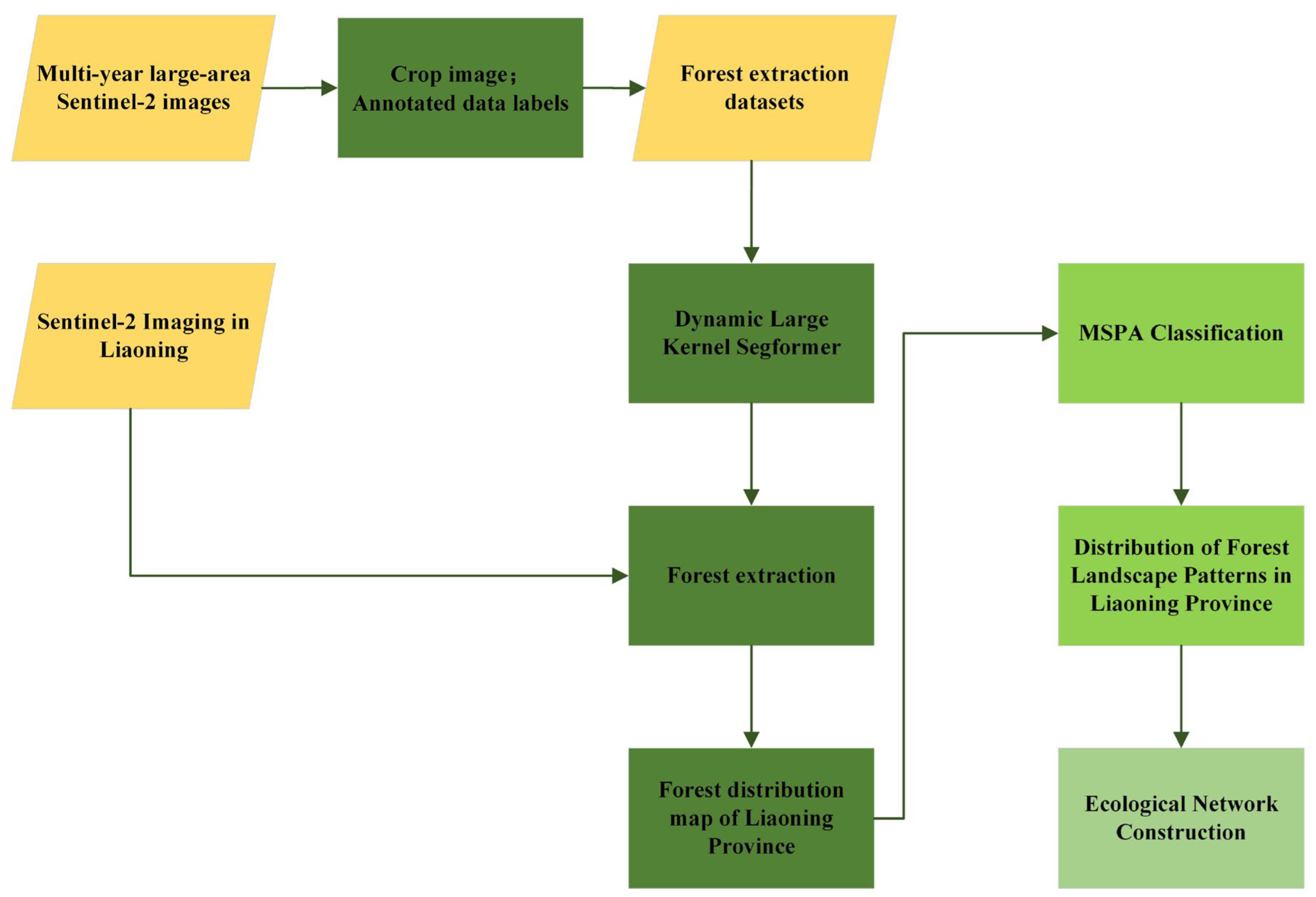

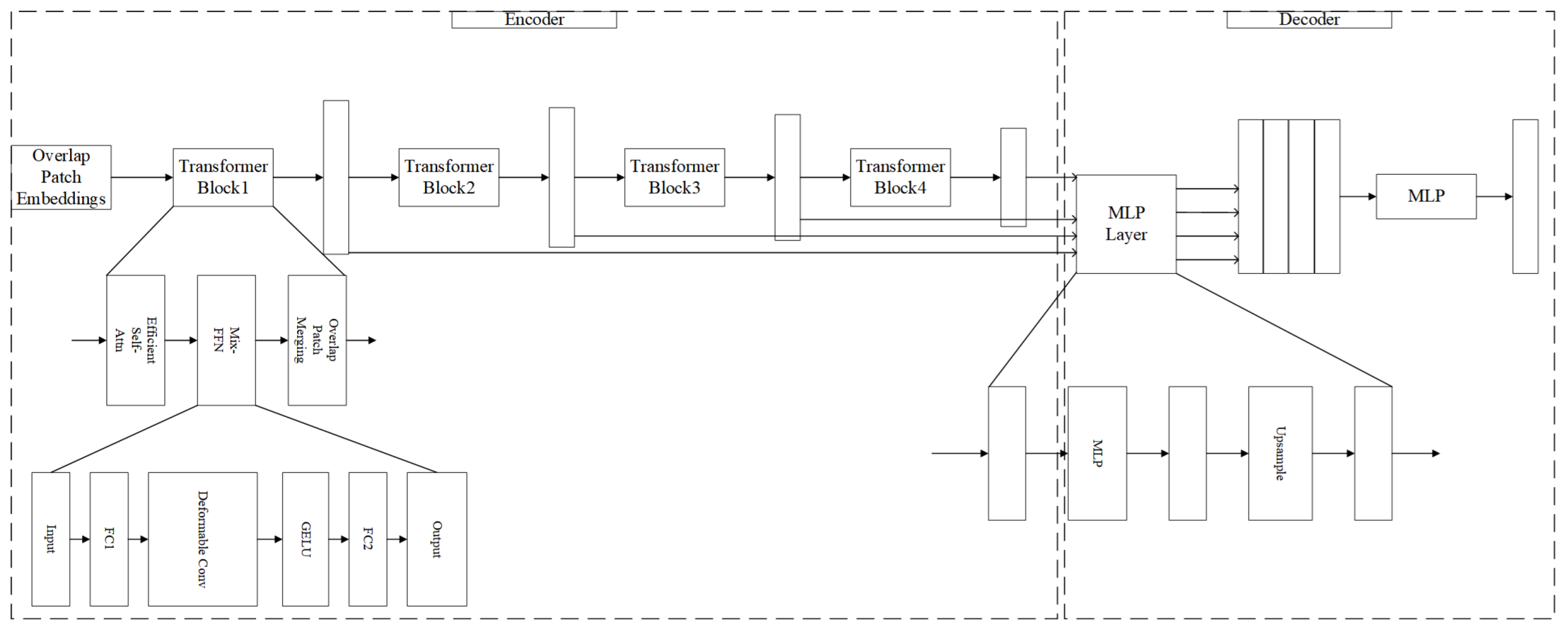
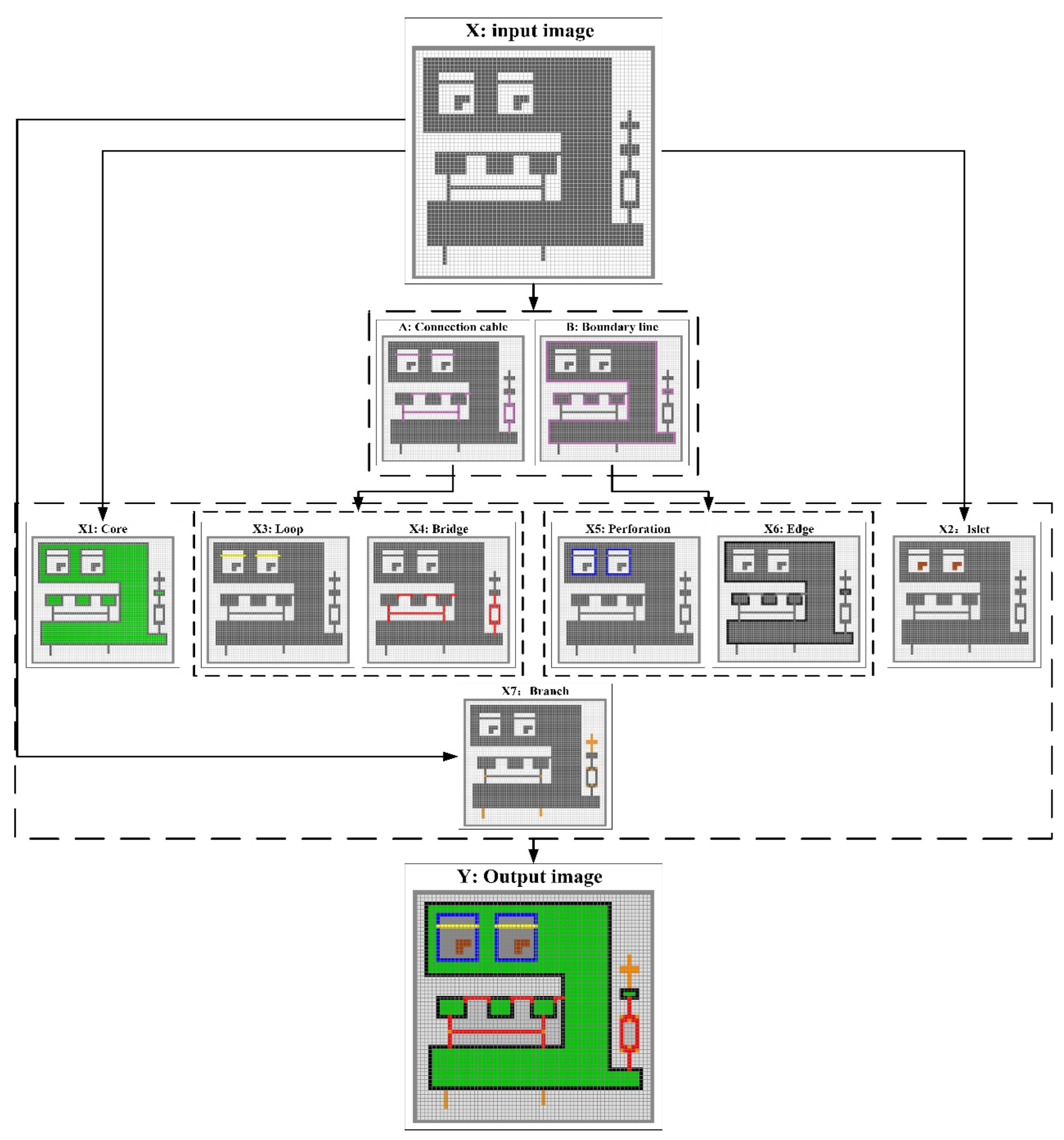
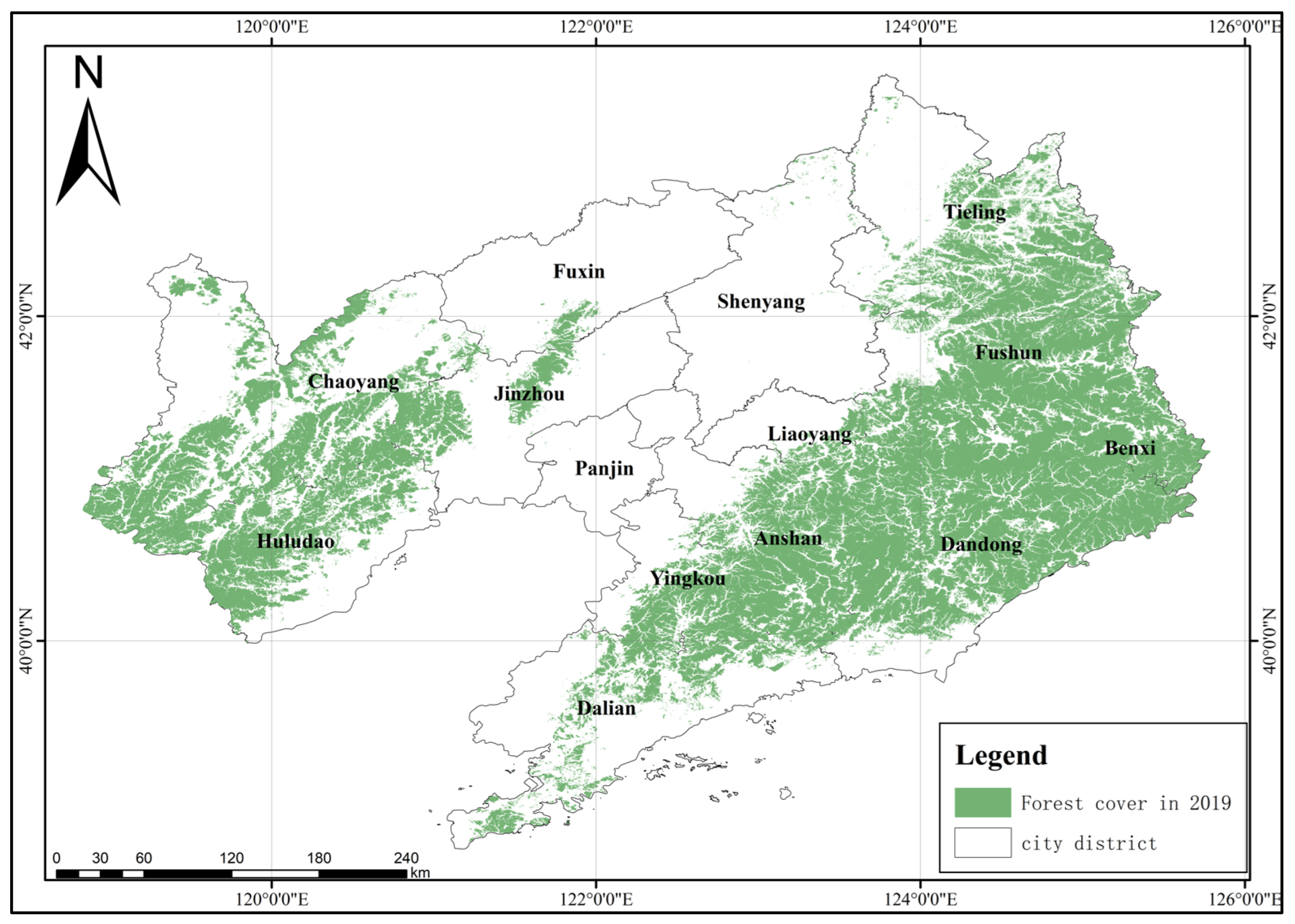
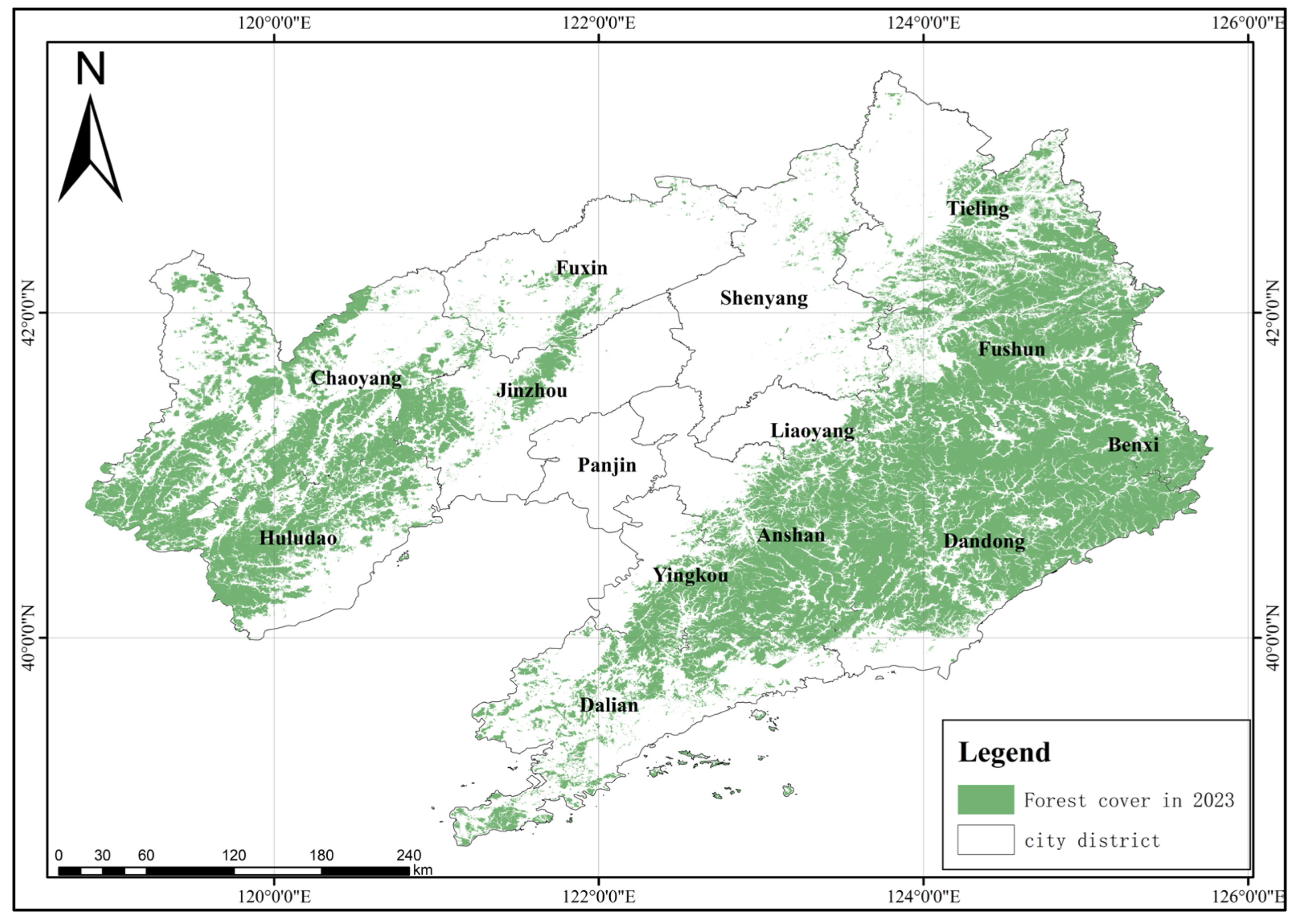
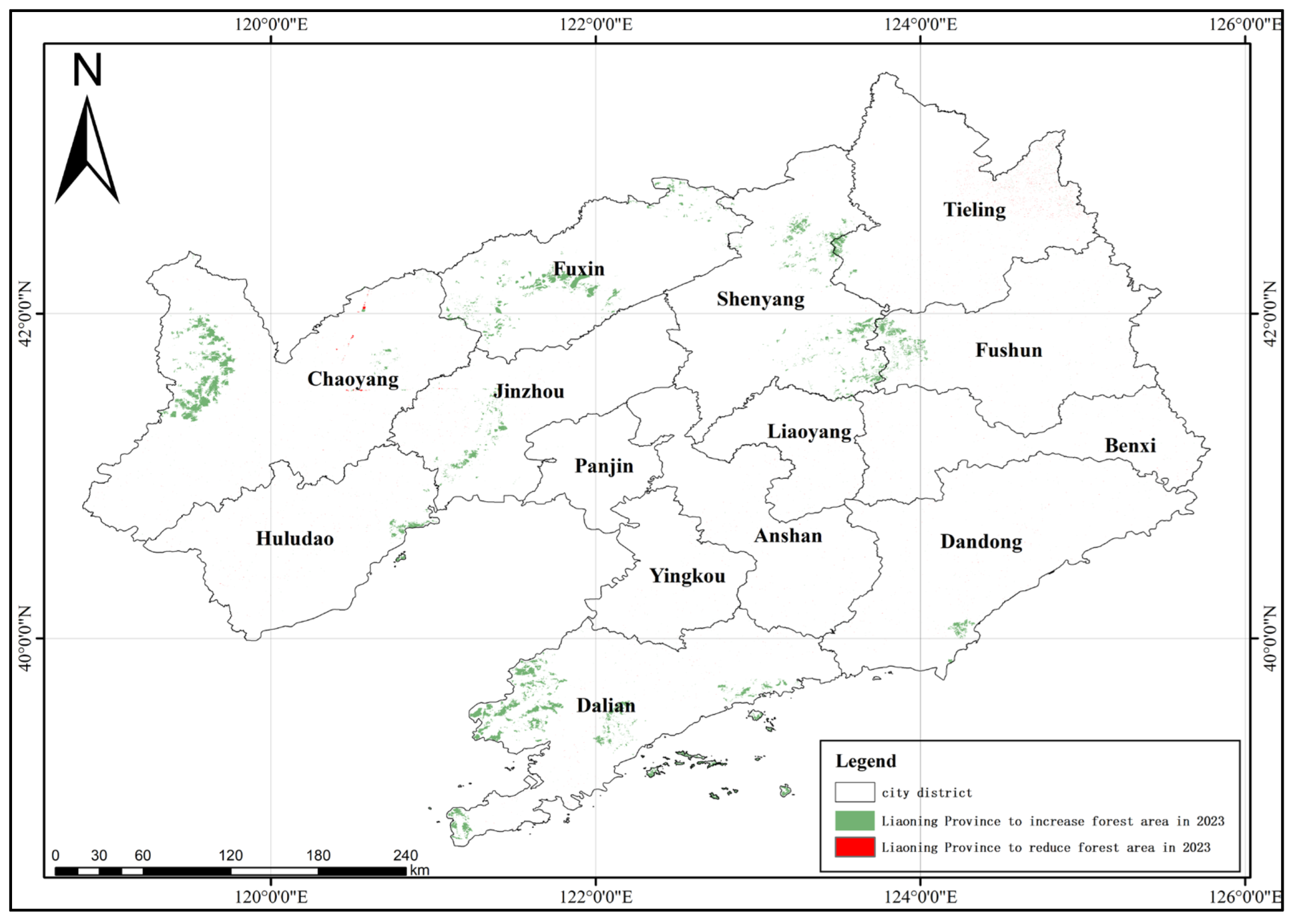
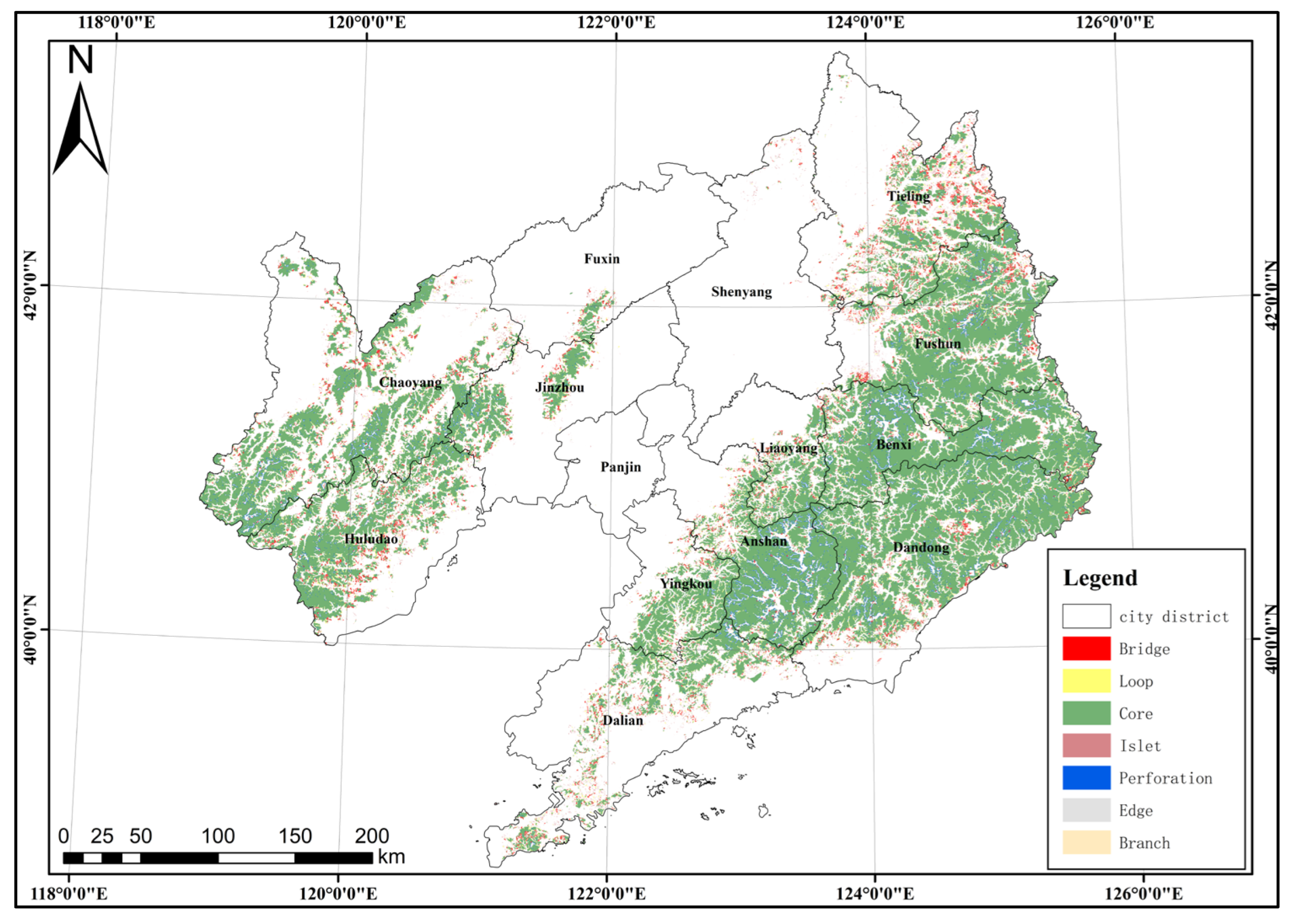

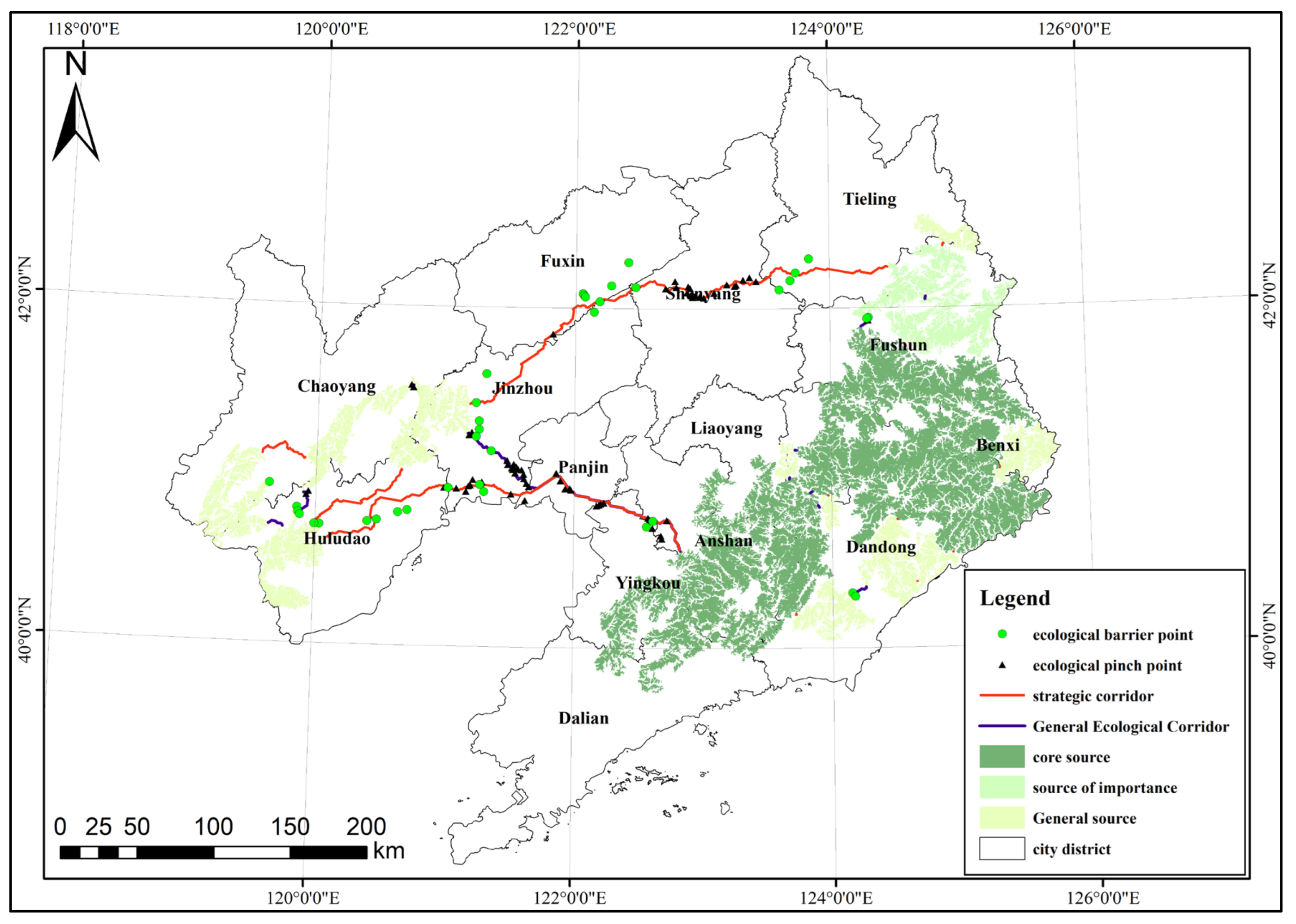
| Normal State | Strong Light | Cropland-Like Disturbance | Cloud Disturbance | Negative Sample |
|---|---|---|---|---|
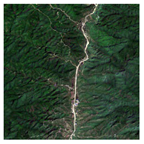 | 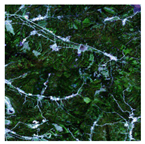 | 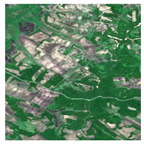 | 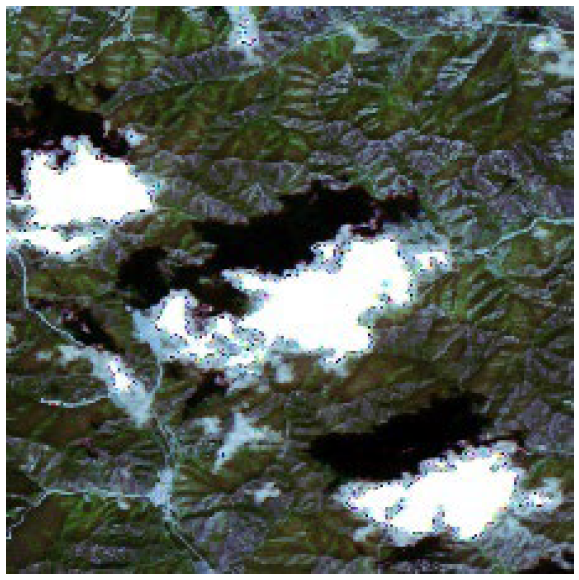 |  |
 |  | 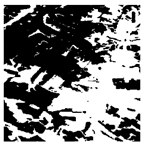 | 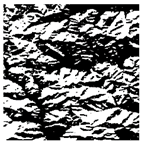 |  |
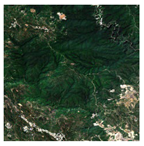 | 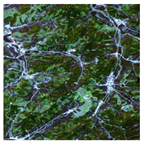 | 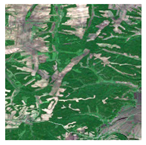 | 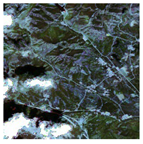 |  |
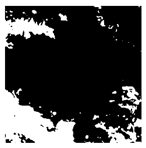 | 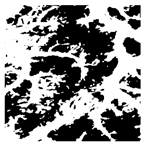 |  |  |  |
 | 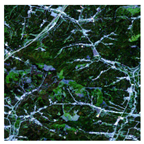 | 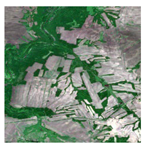 | 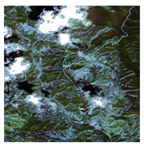 |  |
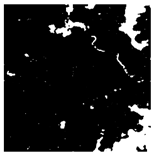 | 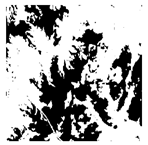 | 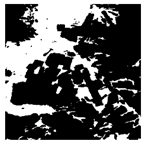 | 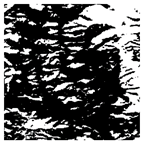 |  |
| Model | Precision (%) | Recall (%) | IoU (%) | F1 (%) |
|---|---|---|---|---|
| Segformer | 87.33 | 86.13 | 76.56 | 86.73 |
| Deformable Segformer | 89.29 | 88.63 | 80.58 | 88.96 |
| Remote Sensing Images | Ground Truth Labeling | Segformer | Deformable Segformer |
|---|---|---|---|
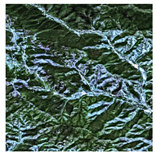 | 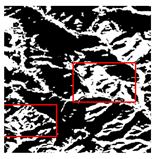 | 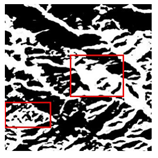 | 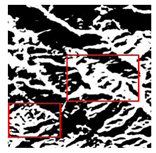 |
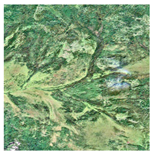 | 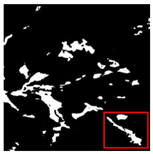 | 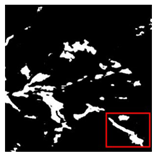 | 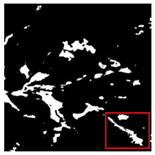 |
 |  |  |  |
 | 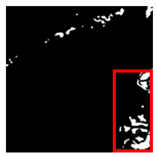 | 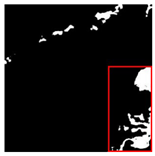 |  |
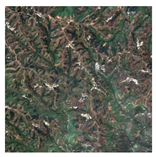 |  |  | 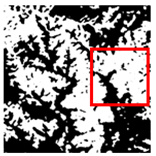 |
| Classification | 2019 (km2) | 2023 (km2) | Change Value (km2) |
|---|---|---|---|
| Branch | 1556.154 | 1782.0648 | 225.9108 |
| Bridge | 1897.3908 | 2260.0692 | 362.6784 |
| Core | 40,206.5244 | 40,831.3152 | 624.7908 |
| Edge | 6398.7444 | 6837.4836 | 438.7392 |
| Islet | 744.2496 | 1019.5128 | 275.2632 |
| Loop | 2529.7776 | 2783.2176 | 253.44 |
| Perforation | 1492.3836 | 1425.6216 | −66.762 |
Disclaimer/Publisher’s Note: The statements, opinions and data contained in all publications are solely those of the individual author(s) and contributor(s) and not of MDPI and/or the editor(s). MDPI and/or the editor(s) disclaim responsibility for any injury to people or property resulting from any ideas, methods, instructions or products referred to in the content. |
© 2025 by the authors. Licensee MDPI, Basel, Switzerland. This article is an open access article distributed under the terms and conditions of the Creative Commons Attribution (CC BY) license (https://creativecommons.org/licenses/by/4.0/).
Share and Cite
Wang, F.; Yang, F.; Chang, X.; Ye, Y. Study on Forest Extraction and Ecological Network Construction of Remote Sensing Images Combined with Dynamic Large Kernel Convolution. Forests 2025, 16, 1342. https://doi.org/10.3390/f16081342
Wang F, Yang F, Chang X, Ye Y. Study on Forest Extraction and Ecological Network Construction of Remote Sensing Images Combined with Dynamic Large Kernel Convolution. Forests. 2025; 16(8):1342. https://doi.org/10.3390/f16081342
Chicago/Turabian StyleWang, Feiyue, Fan Yang, Xinyue Chang, and Yang Ye. 2025. "Study on Forest Extraction and Ecological Network Construction of Remote Sensing Images Combined with Dynamic Large Kernel Convolution" Forests 16, no. 8: 1342. https://doi.org/10.3390/f16081342
APA StyleWang, F., Yang, F., Chang, X., & Ye, Y. (2025). Study on Forest Extraction and Ecological Network Construction of Remote Sensing Images Combined with Dynamic Large Kernel Convolution. Forests, 16(8), 1342. https://doi.org/10.3390/f16081342





